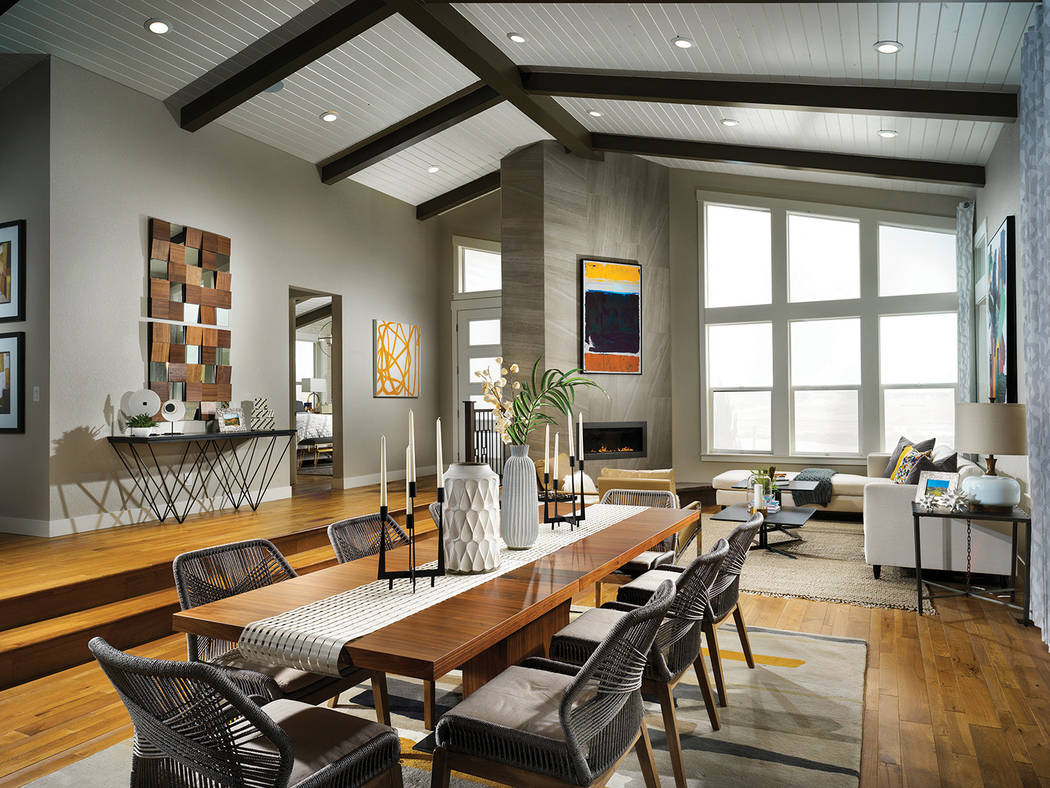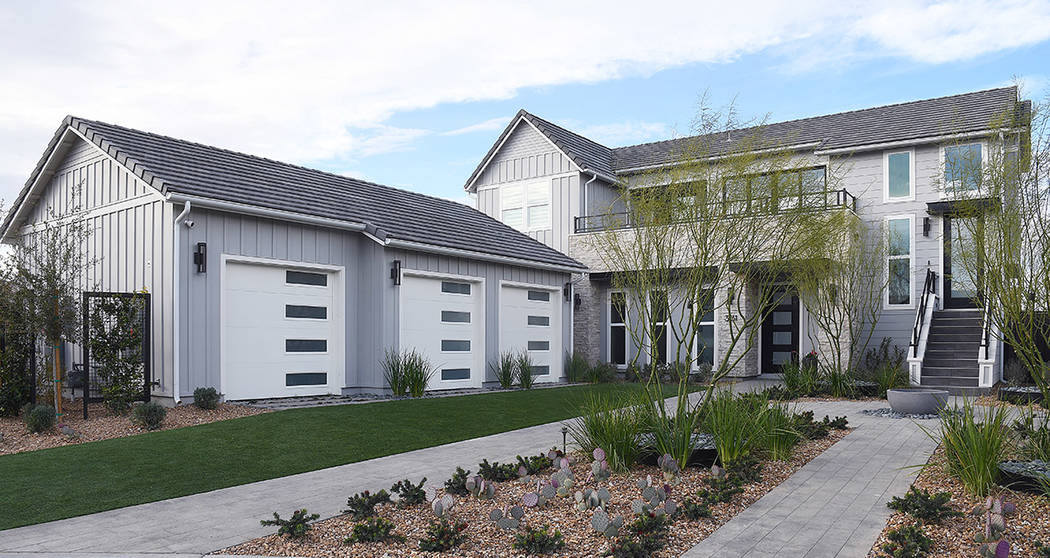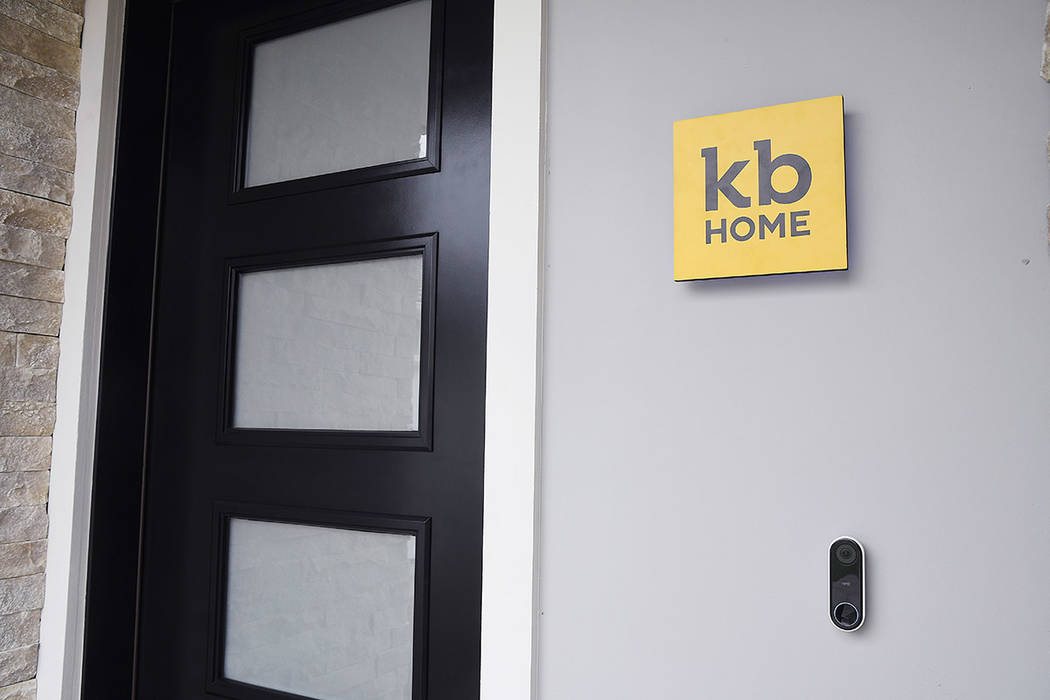Smart home technology in demand
A growing number of homeowners want smart home technology, and builders and Realtors are recognizing that if they want to close a sale.
Smart homes influencing real estate was a theme at CES 2020 and echoed by local builders and Realtors about its growing importance in the marketplace.
John McManus, the editorial director at Hanley Wood, the publisher of Builder Magazine, drove the point home during a CES session when he said installing smart home technology can increase the final closing price of a home by 3 percent to 5 percent.
“Square footage and location has impacted the values of real estate over time, and now we’re talking about a similar analogy to resources we haven’t had before,” McManus said. “It’s the same set of fundamentals with a new set of tools we are working with. When you think about the value of homes these days, you’re talking $15,000 to $17,000 in value with one with smart home devices compared to ones that don’t.”
A Consumer Technology Association study shows that 83 million U.S. households, or 69 percent, have at least one smart home device. Some 22 million households, or 18 percent, have more than one.
There are 37 million households, or 31 percent, that have none and face a bigger hurdle in quickly selling their home or getting the price they want.
A survey from Coldwell Banker said 91 percent of brokers and agents said they would benefit from incorporation of smart home technology in a home. Some 82 percent said the technology helped streamline a sale. They cited automated blinds, climate control, smart lighting, built-in speakers with app control, smart locks, smart garage door opener, smart appliances and smart home security systems. The survey also said 54 percent of sellers would install the technology to help their homes sell.
“A home that has it versus one that doesn’t have it has a higher value,” said Bob Hamrick, CEO and president of Coldwell Banker Premier. “The smart technology makes it economical by saving dollars by managing power bills, and it’s also an amazing convenience.
“We recently remodeled our home, and I can be anywhere and close my blinds, turn up the heat and turn on my spa. You can manage your power bill by turning it on just before you get home rather than having it on all day. It’s a good selling feature.”
Shari Sanderson, a Realtor with Award Realty, said there is a growing number of people over the past five years who see it as important to be able to control home functions with their phone. That applies more to buyers of homes of 3,500 square feet and higher rather than smaller homes, condos or town homes, she said.
“It’s not for everyone, but there are people who say they want a home that has all the technology I need and can move right in. They will choose that over another one that doesn’t have the technology,” Sanderson said.
Sanderson said she has some clients who have added about $3,000 in smart home technology that included a camera system and heating, cooling and lighting controls to increase the value of their homes and help them sell.
Ken Lowman, owner of Luxury Homes of Las Vegas, said many people have taken to the technology, and once they have it and see how convenient it is, don’t want a home without it.
“It’s like a lot of home upgrades you don’t always get dollar for dollar for it, but it helps your home sell quicker,” Lowman said. “It’s a bigger deal than it used to be, and as it’s gotten less expensive to install in a home, it is getting more common.”
While smart home technology was an interesting upgrade option three years ago, new homebuyers in most price ranges and locations now expect new homes to come equipped with the ability to control temperatures, lighting, security and other features from their phone — at no extra cost, said Wayne Yamano, a principal with California-based John Burns Real Estate Consulting.
“Buyers also now expect high-speed Wi-Fi in every corner of the house,” Yamano said. “The builder who is still offering these smart home features only as upgrades is increasingly more likely to be viewed negatively, except in areas with no new home competition or in the most affordable price ranges. As builders continue to pivot to entry-level price points, the importance of including smart home technology in the base price of the home becomes even more evident.”
Yamano said his company’s last survey of new home shoppers showed younger buyers are far more likely to expect smart home features. Some 73 percent of young single buyers without children expect to control their thermostat remotely from their phone compared with 60 percent of all shoppers.
A year ago, KB Home, with about 50 technology partners, unveiled a model at Inspirada in Henderson with the theme of “Where Tomorrow Lives” that showcased smart home technologies. It has 250 IP addresses compared with a more standard new home with 10 devices on the low end to 40 devices on the high end.
That home had a doorbell with a video camera that allows the owner to use facial recognition technology on any visitor, who can be talked to remotely via a mobile phone app.
Through voice command, a Google program can adjust lights, adjust shades, adjust room temperatures and turn on water and fire features.
By using a cellphone to scan a bar code from a food package, the oven temperature can be set and turned off when needed. Faucets respond to a voice command.
There is a smart shower that sets temperature and intensity, and mirrors can be programmed with lighting preferences and music. Toilets open when they notice a person approaching. People can wash their clothes remotely.
During 2019, KB Home saw an uptick of 44 percent in smart appliance selections, and more than 25 percent chose to install connected security devices as well, according to Gina Kirk, KB’s vice president of Design Studio.
“We believe we will continue to see an increase in consumers seeking the convenience of controlling their appliances right in the palm of their hands,” Kirk said. “With the ease of scanning cooking directions to make mealtime as seamless as possible or setting up a load of laundry through the phone while out of the house, app-connected appliances are allowing consumers to make a more efficient use of their time from their phone.”
The CTA released a study at the conference that described safety as “the key driving force” in the smart home category. The organization said it expects smart home sales — including smart doorbells and locks, Wi-Fi cameras, smart thermostats, smart smoke and carbon monoxide detectors, and smart home security kits — to reach 35.2 million units. That is 15 percent growth and a gain of $4.3 billion, a 4 percent increase, the CTA said.
Some of the new products that generated buzz at CES was LG biometric security, in which owners scan their palms and face before being allowed to enter. Some products dealt with package theft with receptacles owners can control by remote control.
Kohler put Alexa into a shower head that allows people to listen to music or other programming.
Melissa Andresko, chief corporate brand ambassador for Lutron Electronics Co., said the conversation over smart homes has shifted over the years. Andresko, who is on the executive board of the CTA, said it’s exciting to see the new players in the smart home market.
“If you take a look eight to nine years ago, smart home products were viewed as more gadgetry in nature, and it was more about what could we connect rather than it should it be connected,” Andresko said. “Today, smart homes are solving problems. We’re offering peace of mind of walking into a well-lit home. By 2030, we won’t be talking about smart homes anymore. It will just be home.”
Jacob Atalla, vice president of Innovation & Sustainability at KB Home, said consumers have expected technology in their cars, and that has moved into their homes. The tipping point happened about two to three years ago with people wanting the infrastructure that will enable technology, which includes artificial intelligence, voice control and connectivity, throughout the house, he said.
It’s about offering the best available products at the time. He said prices, especially for sensors, are coming down. Sensors will be a bigger part of the future of new homes for monitoring health and wellness, he added.
“Right now it’s about peace of mind, delighting the customer and giving back time, comfort and security in their home,” Atalla said. “Last year, we saw a tremendous pickup in how many people are taking connective appliances from our design centers. Now, we’re bringing to the attention of customers the ability to monitor the health and wellness systems and sensors that detect air quality in the home.”
Bill Darcy, CEO of the National Kitchen and Bath Association, who said he has a 15-year-old home with 20 connected devices, described it as exciting where the market is headed and has evolved over the past couple of years. There’s even technology that lets people know if a refrigerator compressor is going bad and needs to be replaced, he said.
“In the appliance category, there’s been so much that’s been happening in connectivity with devices that have been on the forefront of everyone’s minds, such as voice control,” Darcy said. “There’s been this rapid effort to bring products to market. Our designers are telling us that consumers want these devices in their homes.”



















